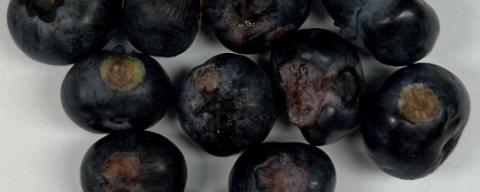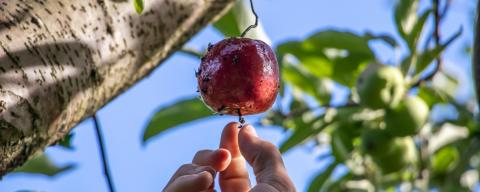By Bo Liu, Director of the UNH Plant Diagnostic Lab and State Extension Specialist, Plant Pathology, and Rebecca Sideman, Sustainable Horticulture State Specialist
Published November 2023
Exobasidium leaf and fruit spot of blueberry, a fungal disease affecting both leaves and berries, was first found in North Carolina in 1998. This disease hardly affected blueberry in the Northeastern region in the past; however, symptoms matching this disease were reported in several farms in Hillsborough County in 2023, and the pathogen has been confirmed as Exobasidium. The green spot on the surface of blue fruit is a highly visible defect which could be rejected by buyers.
Symptoms
On the upper surface of leaves, there are circular or irregular pale green spots. On the underside of leaves, the spots develop pure white fungal growth in a thin layer; the lesions will gradually turn brown as the spots senesce (Fig. 1) and infected leaves can cause reddening and distortion (Fig. 2). In fruit, the disease causes a green spot anywhere on fruit surface that never ripens, often becoming pinkish-green with faint white fungal growth on the surface of the spot (Fig. 3). Infection does not cause fruit to decay, but often causes a sunken area that results in misshaped fruit.
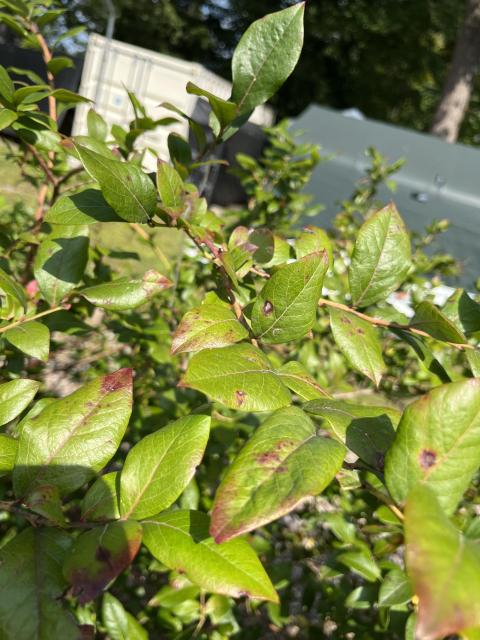
Fig. 1 (a): Exobasidium leaf spots on leaves after fruit harvest in September.
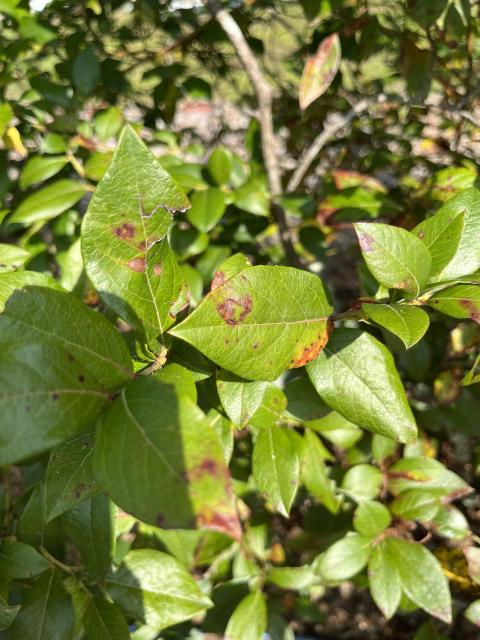
Fig. 1 (b): Exobasidium leaf spots on leaves after fruit harvest in September.
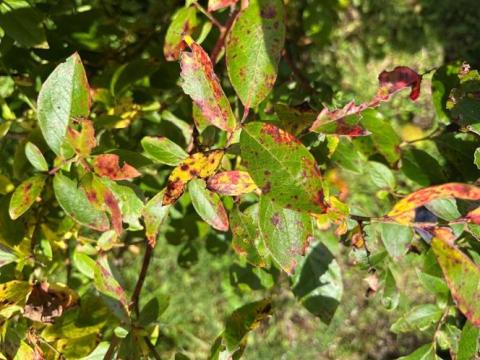
Fig. 2: Exobasidium can cause reddening and distortion in leaves.

Fig. 3 (a): Exobasidium fruit spot on harvested fruit.
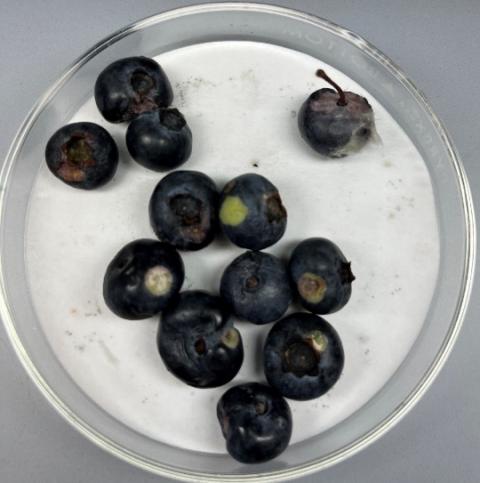
Fig. 3 (b): Exobasidium fruit spot on harvested fruit.
Causal agent
The fungus causing leaf and fruit spots is Exobasidium maculosum, which produces both basidiospores and conidia. Basidiospores are musiform (banana-shaped) to fusiform when viewed under a microscope.
Life cycle
The fungus overwinters on the surface of buds and shoots. Infections occur in spring with the emergence of the first leaves and flowers. In the spring and summer, under high humidity, spores will produce and spread by wind, splashing water, and insects. Initial disease infection is through the rain splash. Leaf spots are seen prior to harvest. The disease can also form on young, actively growing shoots early in the season. Symptoms on fruit are visible early in the green berry stage. The disease is monocyclic. Spores can remain viable until appropriate conditions are present.
Management
Both cultural and chemical management can reduce disease incidence. For cultural control, summer pruning and winter basal pruning are important. Pruning bushes to create an open canopy with good air flow will reduce disease incidence. The following practices will also aid disease control: using drip irrigation and avoiding overhead irrigation; eliminating standing water, and removing trees on the perimeter that block air movement; and cleaning the equipment before moving from field to field. For chemical control, applying calcium polysulfide (lime-sulfur) during the late-dormant period of plant development will stop the disease infection. Protective fungicides such as those with captan or fenbuconazole are effective when applied at bud break and during bloom.
